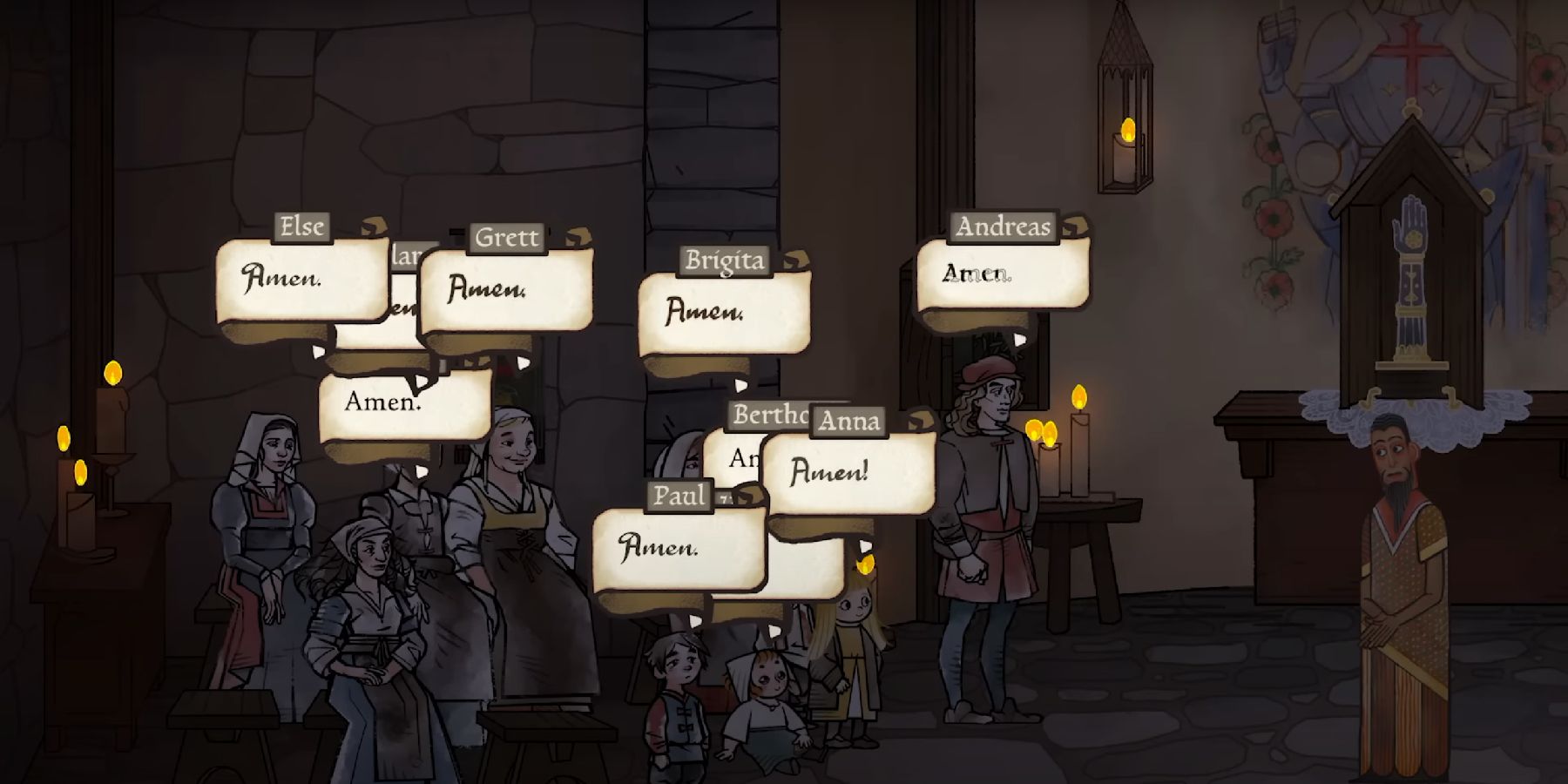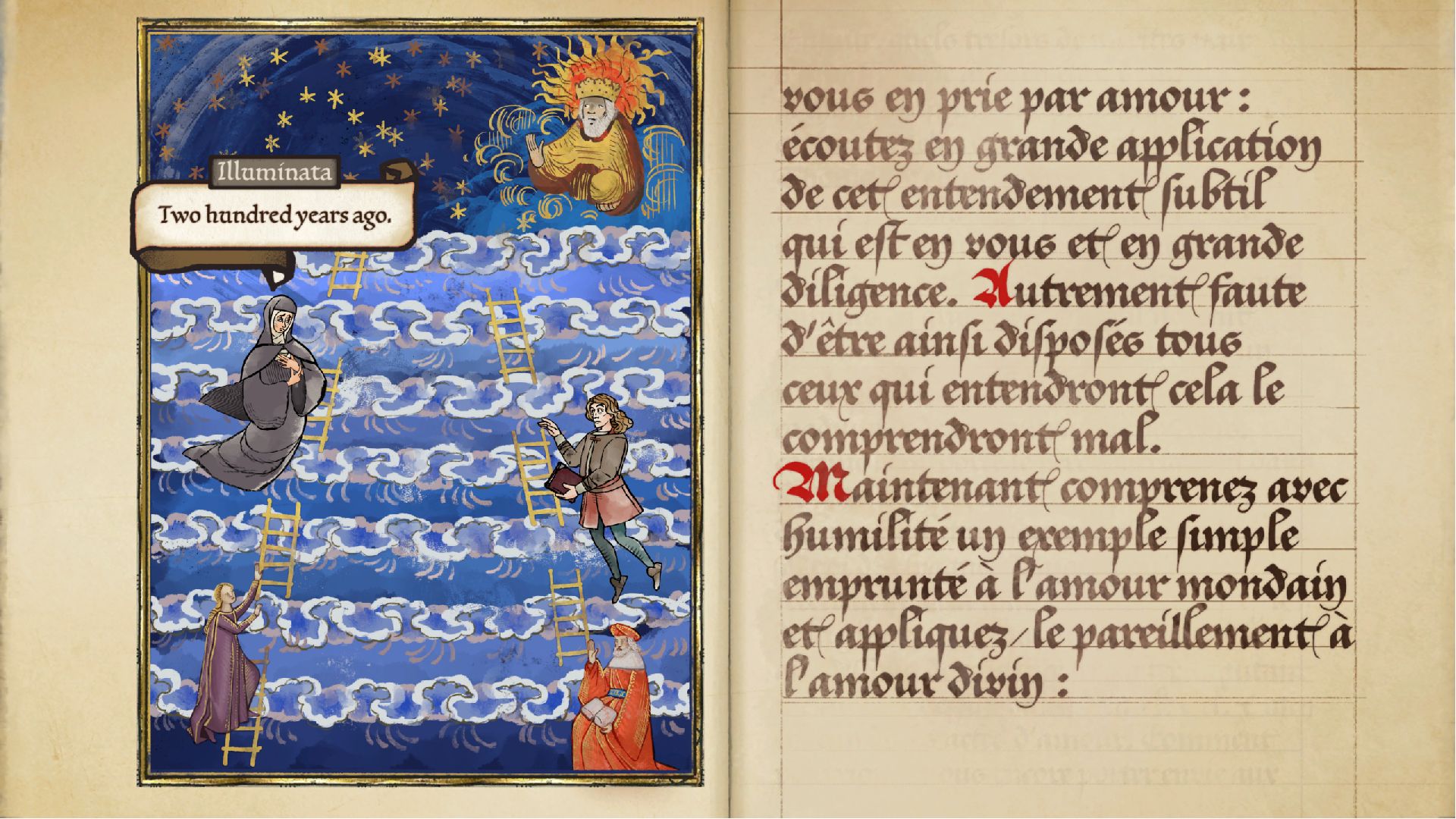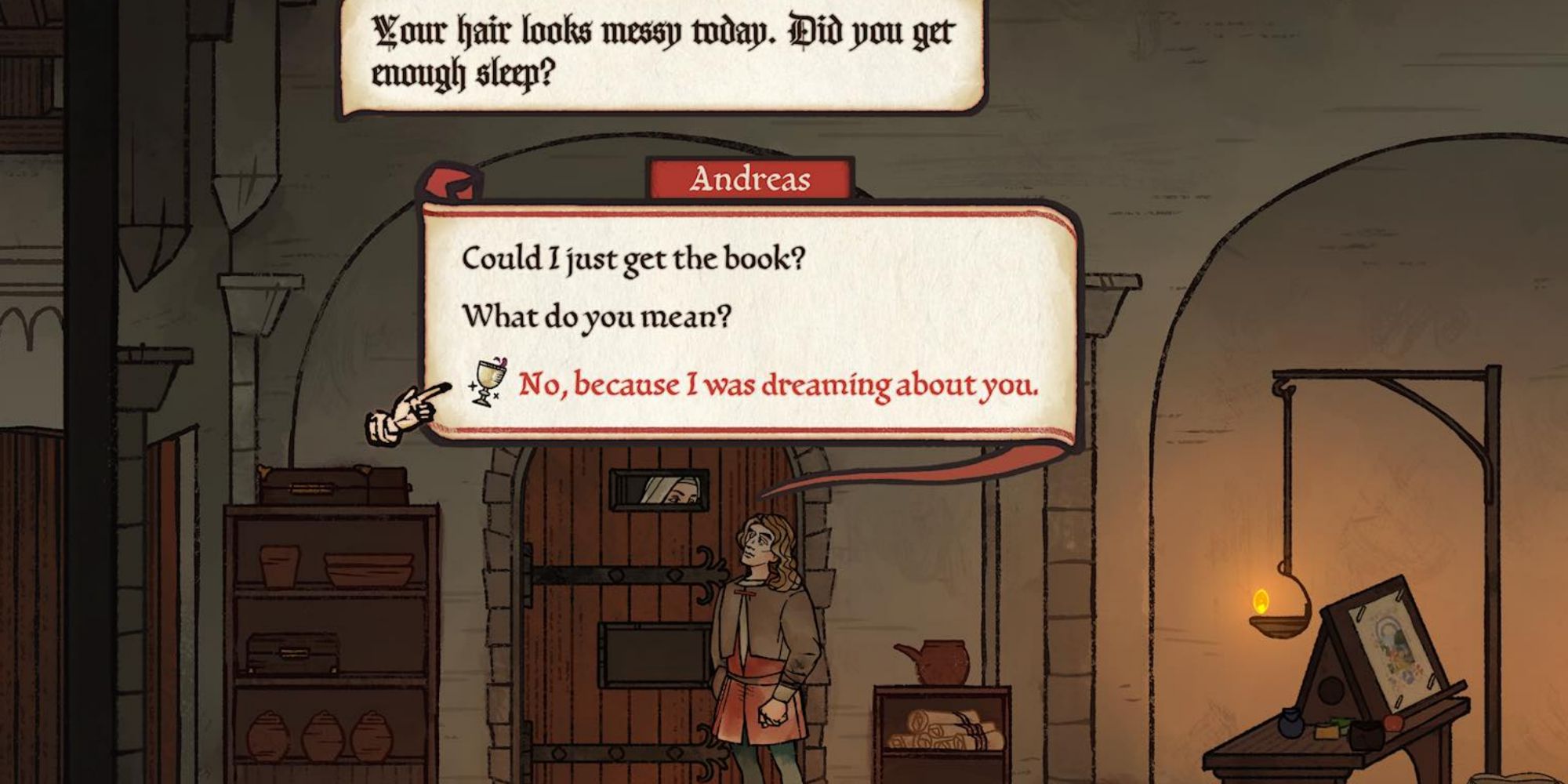Pentiment has been a great ride for fans of narrative-adventure experiences and 16th Century history buffs. Developer Obsidian Entertainment stepped out of its comfort zone with Pentiment, and the warm welcome among fans and critics proves it was worth the risk. The game’s authentic look and compelling story have been high marks for Pentiment; however, some question why a big studio like Obsidian didn’t include voice acting in one of its most notable releases of the year.
The answer lies in Pentiment’s tight vision for a text-based narrative game that prefers to present its story with art and clever dialogue. The game’s approach to aesthetics and story often feels like they don’t need voice acting, which could diminish the entire experience if implemented poorly. Given the small team tasked with making Pentiment, the budget for voice acting might have been out of the question, but that doesn’t stop Andreas’ story from being one of the most compelling this year.
Pentiment Tells a Story With Art
Pentiment is inspired by old-school RPGs from the 90s, namely Darklands on the MS-DOS, and features a more classic experience using art to convey expressions in place of animation. Artistically, players are supposed to take in Pentiment the same way they would a painting, and while paintings don’t have voices, they do speak loudly. This is the core of Pentiment’s vision: the way characters stand in a frame is very purposefully drawn to convey an emotion, and oftentimes characters tell a whole story just on their face. Game director Josh Sawyer has said characters' heads were animated in 3D to communicate expressions better.
Additionally, everything in Pentiment is designed to look like players are digging through illuminated manuscript from the late medieval period. Voiced characters wouldn’t be congruent with a game trying to make players feel like they are reading a Holy Roman Empire-era text. Small details like how scenes transition with the turn of a page or how the screen pops out to show a glossary definition go toward selling the immersive experience of reading through an old manuscript. Players are meant to experience Pentiment’s story not just in dialogue but also visually, which is why voice acting is not entirely necessary for this game’s style.
Pentiment Uses Fonts To Convey Emotion
With such a dialogue-heavy game, there is more to the experience than simply faces and scene composition. The illustrations throughout Pentiment can only accomplish so much, and while voice acting may seem to make sense as a way of fleshing out a character, the alternative that fans will find with every dialogue situation is quite clever. Obsidian makes Pentiment’s dialogue pop with unique personality thanks to its innovative use of fonts and presentation to bring a voice to Pentiment.
Depending on who Andreas is speaking to in the town of Tassing, the handwriting style from the character’s dialogue boxes looks different. For example, lower-class citizens working near the farms have sloppy handwriting and constantly make spelling mistakes, while the monks and nuns at the abbey have more regal fonts indicating that they are very well-read. Additionally, Pentiment shifts fonts and handwriting styles depending on how Andreas changes his perception of someone, going from regal to scratchy depending on how the conversation goes. Ink blots also pop up across the screen during a heated conversation, indicating anger or frustration, bringing with it all the emotion that booming voices would otherwise contain. In the absence of voice acting, Pentiment's solutions for story and characterization make more effective use of the medium.
Pentiment is available now for PC, Xbox One, and Xbox Series X/S.



